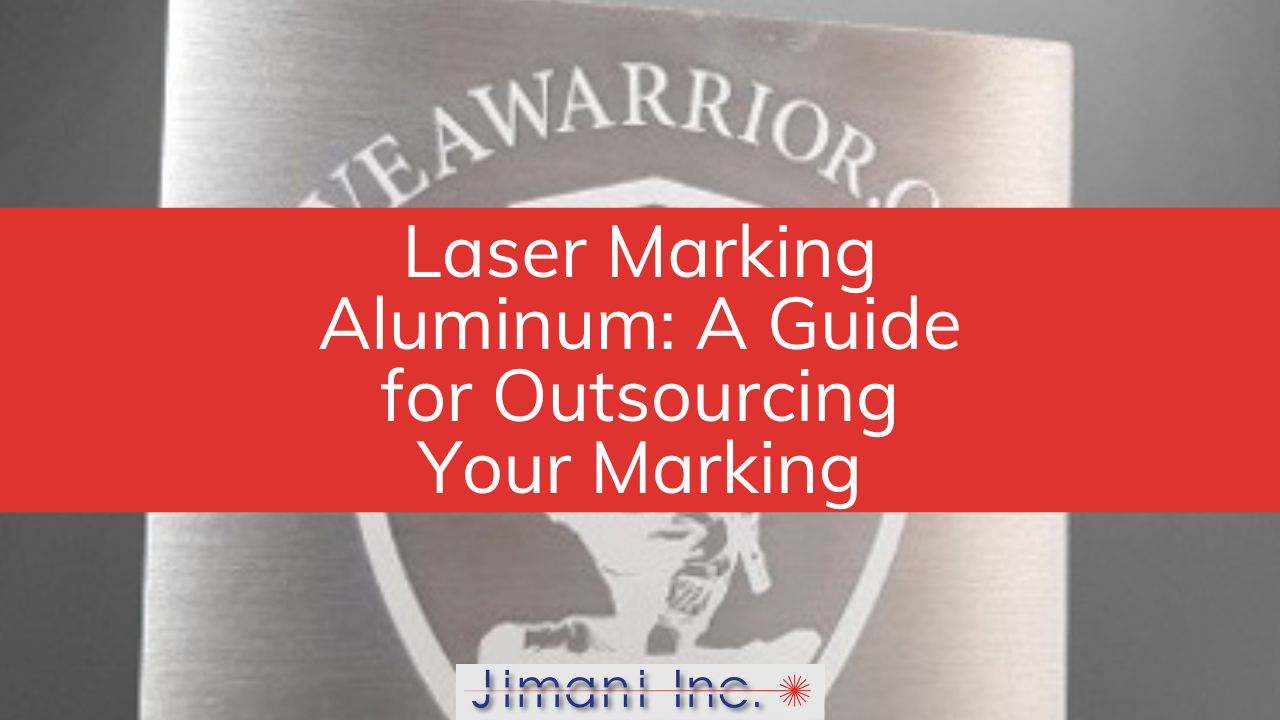Laser Marking Machines
If you are in the market for laser marking machines, you have many options to choose from. The type...
By: Jim Earman on 4/9/25 8:00 AM

Laser marking technology is one of today's most versatile and reliable methods. As specialists in custom laser marking services, we've seen firsthand how this technology can transform ordinary aluminum items into precisely branded, professionally marked products that stand the test of time.
Laser marking aluminum is among the most common applications for fiber laser marking systems. The popularity stems from the exceptional versatility fiber lasers provide when working with aluminum substrates.
Both uncoated and coated aluminum can yield attractive, permanent marks. Coated aluminum typically features anodized or chemical film conversion coatings (like Iridite or Alodine), and in these cases, laser marking removes the coating by vaporizing it away from the surface.
Ablation is the most common technique used on aluminum. This process involves the removal or vaporization of material from the substrate's surface. When working properly, the laser light is absorbed on the surface with minimal penetration into the material.

The laser removes the coating and textures the underlying surface when marking anodized aluminum. As the laser ablates away the anodize, a naturally occurring oxide layer is formed over the bare aluminum surface and the scattering of reflected light creates the appearance of a stark, white mark. The contrast is excellent when working with dark-dyed anodized surfaces, creating bright white marks against dark backgrounds.
The results are more subtle for clear or light-colored anodizing. After marking, a natural oxide layer forms on the exposed surface, protecting the marked area.
Interestingly, white laser marks on clear or light anodized surfaces can be darkened by applying an oxidizing solution such as Aluma Black. This solution is applied to the marked surface, allowed to work briefly, and then cleaned off – though care must be taken to prevent staining adjacent areas.
Engraving creates deeper marks in the aluminum by removing more material. This technique requires increased laser power and lower marking speeds.

In our experience, deeper laser engraving works best at marking speeds of about 5-10 inches per second, using multiple passes to remove thin material slices until achieving the desired depth.
Using extremely slow marking speeds to remove large amounts of material in a single pass often results in a rough bottom surface and slag accumulation at the edges.
Multiple laser passes with different fill angles at higher speeds allow for cleaner troughs and edges. More passes create deeper marking until either the laser beam begins to go out of focus or the vaporized material cannot escape from the narrow trough.
Due to its thicker coating, hard anodized aluminum presents unique challenges. Unlike Type II anodizing, hard anodizing penetrates the substrate as much as it builds up the surface, creating a durable, ceramic-like finish.
Higher-powered lasers (50-watt range) typically deliver better results for hard anodize marking, though 20-watt systems can work with more passes and slower speeds. We've succeeded by increasing fill spacing in marking objects to .001 inches and making multiple passes at relatively high speed (around 25 inches per second) with higher laser power (around 40 watts).
With hard anodizing, we still use the damage and cleanup pass technique, though the cleanup pass rarely delivers the same bright white appearance achieved when marking Type II anodized surfaces.
Aluminum's prevalence across industries makes laser marking services particularly valuable. Our clients come from diverse sectors, including:
For these industries, we regularly produce:
Any image that can be reduced to vector lines or text can be successfully marked on aluminum.
Fiber lasers have become the industry standard for metal marking applications, offering lower capital costs, reduced operating expenses, and superior marking performance compared to older YAG laser systems.

Modern fiber lasers provide exceptional benefits:
The fiber laser directs a highly focused beam through a specialized f-theta lens, which maintains focus throughout a plane rather than at just one point. The beam is steered by computer-controlled mirrors, allowing precise marking anywhere within the defined area.
When selecting a laser marking partner, consider their equipment capabilities, industry experience, and understanding of different aluminum types and finishes. Professional marking services typically operate at shop rates between $60-100 per hour.
The final cost depends on:
For example, marking a simple part number on anodized aluminum tags might cost around $0.30 per piece at volume, plus initial setup charges and any required artwork preparation.
Laser marking aluminum offers exceptional permanence, precision, and versatility across countless applications. Whether you need functional identification marks for industrial components or high-end branding for consumer products, the combination of aluminum and laser technology delivers outstanding results.
By understanding the different marking techniques and aluminum types, you can specify exactly the mark that best suits your product and application. A knowledgeable laser marking partner can help guide you to the optimal marking solution while ensuring consistent, high-quality results across your production run.
If you are in the market for laser marking machines, you have many options to choose from. The type...
3D Medical Manufacturing, located in Riviera Beach, FL and founded in 1994, is a Contract...
Industry: Construction